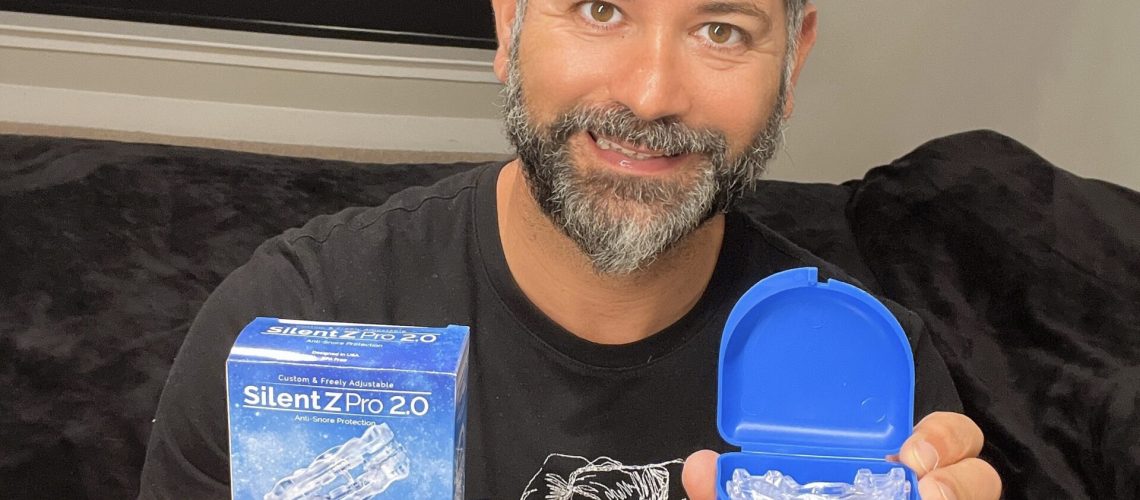By this point I was imagining that I would spend the rest of my life alone on the sofa bed when, after a nearly two-year wait, I was finally given an appointment at the hospital’s sleep clinic where they promised to do what they could to save my marriage. To that end, a nurse gave me a monitoring device rather like a wrist-based fitness tracker to sleep with overnight. While I slept it measured brainwaves, as well as muscle and breathing activity.
Twelve weeks after wearing this device for one night and returning it to hospital, a letter arrived. It informed me that: my AHI was 0.6 per hour, ODI 0.9 per hour, RDI 5.7 per hour, snore index 1.7%, mean SpO2 97% and my Epworth score 9/24. I obviously had no idea what any of this meant and so went online to find out.
AHI, which stands for apnoea-hypopnoea index, shows how often my breathing stops and starts while asleep for 10 seconds or longer (apnoeas); a hypopnoea is a partial loss of breath for 10 seconds or longer. RDI stands for respiratory disturbance index, which, like the AHI, measures apnoeas and hypopnoea, but in addition, measures lower-level breathing disruptions in sleep called respiratory-effort related arousals, which aren’t as sexy as they sound. ODI means oxygen desaturation index and measures how many times an hour oxygen levels fall below a baseline, while SpO2 also measures how much oxygen there is in your blood. Oxygen levels fall during sleep because of interrupted breathing. The snore index is the number of snore events per hour. At 1.7% that doesn’t sound as though I snore very often, but, of course, as I sleep blissfully through these snore events and am completely unaware of how the racket is giving my wife and anyone else in earshot the nocturnal pip, I’m not fit to judge on the intensity of those events. One paper I read tells me the snoring can reach 100 decibels and prolonged exposure can damage hearing.
When I finally get an appointment with a respiratory consultant to explain all this data, I’m told that the snore index measures volume rather than intensity of snoring, adding that it wouldn’t surprise him if it were 45 decibels – roughly the volume of traffic. I’m told I do not suffer from sleep apnoea, nor was there evidence of sleep-disordered breathing. The Epworth score, he explains, is based on a questionnaire I filled in asking in which situations I might nod off (watching telly, reading, at the wheel of a car stuck in traffic, etc). The ranking of 9 suggests I have an average amount of sleepiness. If it were above 16, I should seek medical attention (though, you’d think, I should probably get someone else to drive me to hospital).
This is all good news but what I need is a solution to the problem. The doctor recommends I purchase a mandibular splint, which he describes as rather like a gum shield that you boil before shaping it to your mouth. But I’ve tried that sort of device, I wail. Keep trying, the hospital suggests. Using the splint for more than a few nights is
necessary so you can get used to the device being in your mouth. The idea is that the splint pushes your lower jaw forward and stops your windpipe collapsing and causing obstructed breathing.
There’s also a new device on the market currently intriguing sleep experts. The eXciteOSA is unusual in that it’s a device you wear during the day to stop snoring at night. It electronically stimulates your lolling tongue and collapsing windpipe, ostensibly to retrain you physiologically not to snore at night. Test data done by the manufacturers looks promising.
I check out eXciteOSA’s website, already predisposed against it because of the otiose capitalised X. It looks rather like an electronic version of those throat exercises that had me pronouncing vowels like a latter-day Eliza Doolittle. “Tired of sleeping alone?” asks the website. You’d better believe I am. There’s a picture of a distinguished grey-haired man reading Wallpaper magazine while a gizmo that looks like a cat’s extended tongue dangles goofily from his mouth. Behind him in a living room devoted to what looks like minimalist Danish design is a glamorous woman, presumably his life partner. She is smiling, presumably not just because she’s married to a silver fox but for the first time in years is getting eight hours’ uninterrupted sleep a night.
This, Wallpaper notwithstanding, is very much the image of domestic felicity I’m looking forward to enjoying. I am tempted into ordering an eXciteOSA – until I discover it retails at £540.
Instead, I dust off the SomnoGuard 3 for another try. After five nights of wearing it, I wake myself up snoring. Clearly it doesn’t work for me.
In despair, I opt for another mandibular splint; the Stop Snoring Mouthpiece, at £44.99, costs less than a 10th of the price of the eXciteORA. Perhaps it was the series of Zzzzs spiralling from the company logo that tempted me. More likely it was the 30-day money back guarantee if the device doesn’t stop my snoring.
When this mouthguard arrives, it looks and feels in the mouth exactly the same as the SomnoGuard 3, but instead of boiling it to fit my mouth, I just pop it in at night. I’ve absolutely no idea why it works better than the SomnoGuard 3, but, for two weeks now, it has. I’m back sleeping with my wife in the proper bed, and no longer disrupting her sleeping with my snoring, though the device hardly makes me look like love’s young dream. It makes all but rudimentary kissing tricky. While my wife slept the other night, I lay awake wondering if this is how it is going to be for the rest of our marriage. Perhaps. The prospect is not so appalling.
And it sure beats the sofa bed.

